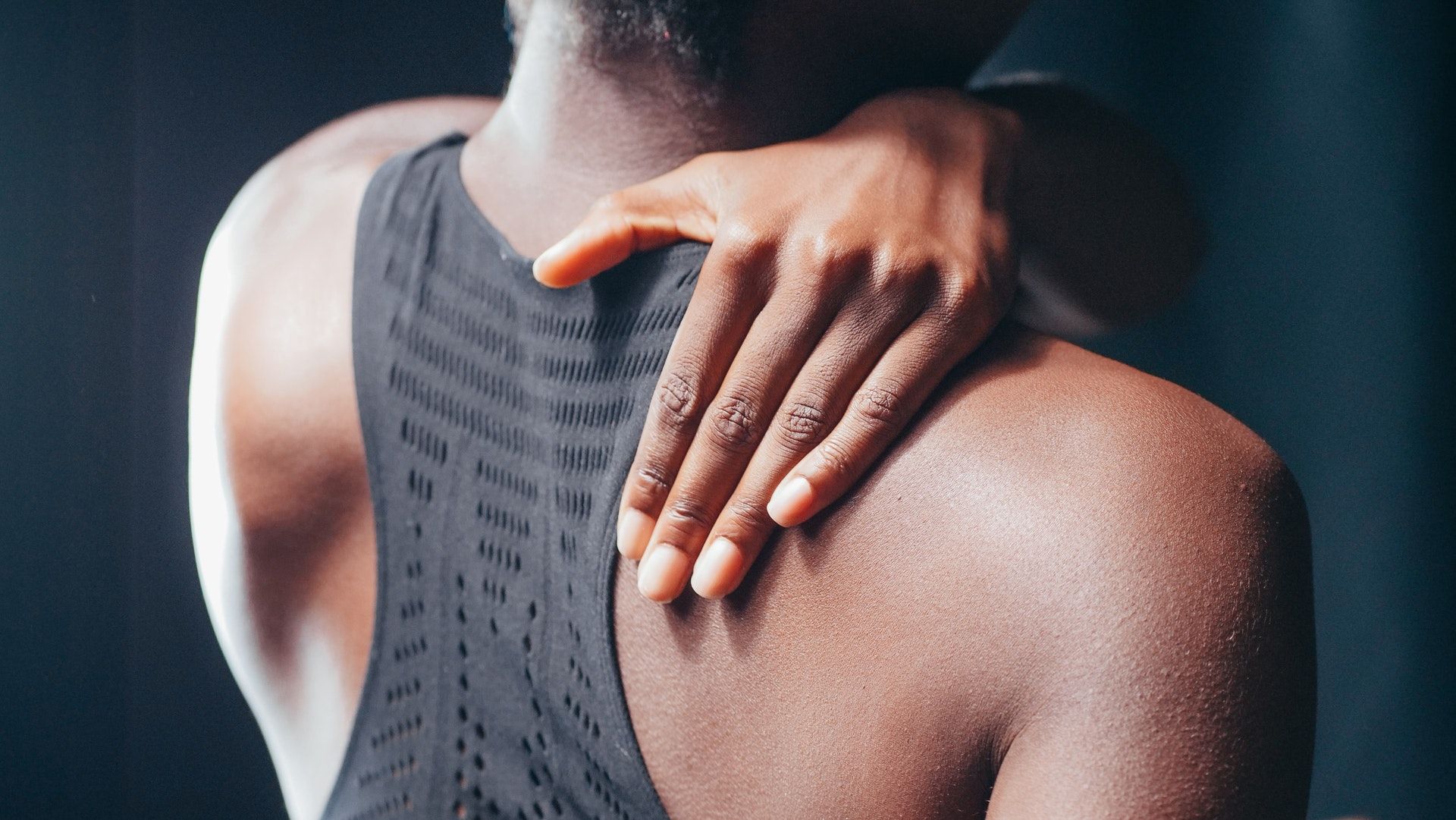Can mindfulness & meditation help with chronic pain?
Sep 12, 2021 — Gareth Yorke
Living with pain can be a struggle, and it goes without saying that acute or chronic pain can have an adverse impact on our lives. Recurring pain can make us feel trapped in an uncooperative and unforgiving body, and this can have a detrimental effect on our mental wellbeing. The good news is that there are some simple techniques we can use to help us cope better, and proactively manage the way we deal with discomfort in the body. Practicing meditation on a regular basis can help you to reduce the impact of pain, so that you can find a greater sense of ease in your day-to-day life.
Meditation won't remove pain altogether, but it can bring some relief by improving the way we react to painful sensations and discomfort in the body. Studies have shown that meditation can reduce our sensitivity to pain, and also reduce the stress and anxiety that it causes. A 2016 study found that short-term meditation training can lead to a significant reduction in pain intensity.
Through meditation, we can alter the way that we relate to pain. By becoming mindfully aware of painful sensations, we can process them more effectively, lessening their impact on our body and mind. Meditation can help us to cope with pain in several key ways:
- By becoming more aware of bodily sensations and their impact on our mental state, we can become more comfortable in our own bodies.
- When we pay closer attention to the sensations of pain, it can actually reduce the perceived intensity.
- When we mindfully recognize the way we respond to pain, it allows us to let go of negative reactions more easily.
- By becoming more mindful of our reaction to pain, it can help us lessen our resistance to it, bringing us a greater sense of peace.
- Mindfulness allows us to be more accepting of discomfort and pain in the present moment.
Medito, the 100% free and nonprofit meditation app, has a pack of meditations specifically created to help you deal with pain.
Let’s take a look at each of these in more detail.
1. Becoming Aware of Bodily Sensations
Body scan meditation can help us to become more mindfully aware of bodily sensations by exploring physical sensations throughout the body. This method involves progressively scanning from the tops of our heads down to our toes, clearly focusing our attention on one part of the body at a time. If there is any discomfort, try to observe it with a sense of curiosity, without judging it, or trying to change it - but of course, you can adjust your position if needed.
If you get distracted by any pain or discomfort in a different part of your body, take a brief moment to observe it, and then gently bring your attention back to scanning down through the body.
Try following these steps:
- Become aware of the sensations in your feet. Your heels, the soles of your feet, your toes, the tops of your feet, your ankles.
- Pay attention to the feeling of your lower legs, noticing any sensations in your shins and calves. Notice your knees and your upper legs. Notice any sensation of weight - is there a lightness or a heaviness in your legs?
- Bring your attention to your pelvic region and your abdomen. Clearly observe any sensations that appear there as you breathe in and out.
- Become aware of the feeling in the muscles in your lower back and your spine. Notice if there is any tension there.
- Continue scanning upwards to your upper back and chest. Notice any subtle movements there caused by the rhythm of your breathing.
- Take notice of any sensations in your hands and your fingers. Then bring your attention to your lower arms, your upper arms, and your shoulders.
- Become aware of the feeling of your shoulders and neck, observing any sensations in the muscles there where they meet the top of your spine.
- Notice the feelings in your jaw. Is there any tension? Feel the sensations of your cheeks, your nose, and your eyes. Notice how your forehead feels. Observe any sensations on the top of your head.
This type of meditation can help you to become more aware of your body and its impact on your mental state. Through practicing this technique, you might find that you become more comfortable in your own body, leading to an improvement in the way you respond to pain and discomfort.
2. Paying Attention to Pain
It may seem counterintuitive to manage pain by paying attention to it, but brain imaging research has shown that practicing mindfulness impacts activity in regions of the brain responsible for pain, significantly reducing our experience of it.
The practice of mindfulness is paying close attention to our experience in the present moment and accepting it without judgment or analysis. When we do this with sensations of discomfort or pain, we can bring about a greater sense of ease in the body and mind. You can try this by paying very close attention to bodily sensations, including any pain or discomfort. The trick is to approach the meditation with a sense of investigative curiosity.
Practicing this type of meditation can lessen the impact of pain and discomfort in your day-to-day life. When we learn to observe discomfort with less judgment, it can positively impact the way we experience it.
3. Recognizing Your Response to Pain
A big part of our experience of pain is our emotional response to it. Pain can cause significant stress and anxiety, which can exacerbate the discomfort. Mindfulness allows us to notice these feelings as they arise, and to let them go more easily before they have the chance to cause a cycle of negativity and discomfort.
We can practice mindfully observing our reactions using the labeling technique. Pay close attention to your experience in the present moment, observing each breath coming and going. If you get distracted by pain or discomfort, take a moment to acknowledge it. Notice if the discomfort causes you stress or anxiety, and witness this feeling clearly. Label it, and then bring your attention back to the sensations of breathing.
Try the following steps:
- Relax in a position that you find comfortable, whether it's sitting, kneeling or lying down. Close your eyes and take a few deep breaths. Set an intention to be aware of any sensations without judgment.
- Allow your breath to settle into its natural rhythm, and follow each breath closely.
- If you get distracted by unpleasant physical sensations, try to observe them briefly without judgment. Label the feeling with a word like "aching" or "pain", and then continue to follow the breath.
- When pain arises, notice any emotional response. Do you feel stressed, anxious, worried or annoyed? Briefly notice this emotion and label it, just like you label the physical sensations.
- Try not to think too much about the label. It should be a quick acknowledgement of the type of feeling before you carry on following the breath.
- If your posture starts to cause more pain, feel free to change your position. Otherwise, just label the sensation and bring your attention back to the breath.
4. Letting go of resistance
Meditation can help us to deal with pain more effectively by allowing us to let go of our resistance to it. If we can observe and accept the painful sensation, instead of resisting it, we can start to reduce its impact and severity. The key is to be mindful of the physical feeling, without trying to change it, or push it away. Of course, you can adjust your position if helps to relieve discomfort, but when we let go of the idea that we need to resist our pain, we can reframe our relationship with it.
At times, when we are in pain, we feel as if we are 'fused' with it, our pain takes all of our mental space. We can instead try to try to separate our awareness from the sensation of pain, by giving different labels to our sensations. When you notice an unpleasant physical sensation, try to detach from it and observe it for a moment, with a sense of curiosity. Notice whether you feel any negative emotions, or the need to push the pain away. If you do, try applying the label "resistance", try to let it go, and then gently guide your attention to the sensations of breathing.
Resistance to pain can make the discomfort worse. When we become more mindful of our bodily sensations, and our emotional responses to them, we can reduce their impact on our frame of mind.
5. Accepting Pain in the Present Moment
Some ancient meditation practices, such as those from Buddhism, teach that suffering stems from grasping at things we desire and pushing away the things we don't. When we are dissatisfied with our experience in the present moment, and we wish that it was somehow different, this causes more suffering. If we can learn to let go of our desire for things to be different, we can bring a greater sense of ease and comfort to our situation.
We can apply this approach to physical pain. Although mindfulness won't remove pain altogether, it can help us to improve our relationship with it, lessening its impact.
We're trying to cultivate a clear awareness of our conscious experience so that we can observe any pain or discomfort and our reactions to them, without judgment. By following the breath closely, it helps us stay grounded in the present moment, rather than getting caught in a cycle of negative thinking and resistance to discomfort. Observe the pain for a moment, accept it, and then return to the breath.
Try not to get frustrated if you feel distracted by uncomfortable physical sensations. You can adjust your position if you need to, but let the sensations become part of the meditation. By meditating, we're learning to observe this pain and discomfort, without judging it. Just take notice, and return to following the breath.
By practicing objective awareness and non-judgment of our thoughts and bodily sensations, we can start to realign the way we relate to pain so that it has less impact on our wellbeing.
Conclusion
It can be very difficult to live with chronic pain, but as we’ve discussed, there are several ways that mindfulness can bring a greater sense of peace. Intentionality is key. Try to set a resolute intention to let go of resistance, to accept the present moment, and to be clearly aware of your body and your reactions. Medito has a collection of meditation sessions specifically designed to help you practice these techniques, and to bring you a greater sense of comfort.
Remember that meditation isn't intended to replace medical treatment for the underlying causes of your pain. Make sure you speak to a doctor about any persistent pain you experience.
Medito, the 100% free and nonprofit meditation app, has a pack of meditations specifically to help you deal with pain.
